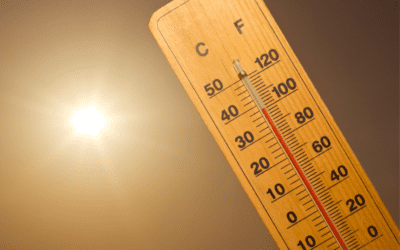Emergency Planning for Older Adults & Individuals with Disabilities

While disaster situations affect everyone, older individuals or those with disabilities may be more affected. The impact of emergency situations on these individuals can be compounded by factors such as reliance on electrical power, elevators, accessible transportation, or communication.
It is important to take the appropriate steps to better prepare yourself to care for older individuals or those with disabilities in the event of a disaster.
Service Animals
If you or a family member utilizes a service animal, it is imperative to not only prepare for yourself, but also to ensure that the service animal’s needs are met. Follow the checklist below to prepare an emergency kit for service animals in a disaster.
- Stock a minimum of a 72-hour water and pet food supply with portable water and food bowls
- Store copies of medical records showing recent vaccinations
- Extra leash and collar
- Blankets and toys
- Plastic bags
- Bandages
- Up-to-date ID tags with the owner’s phone number and name (a microchip is recommended)
- Recent photos of the animal in case they get separated from you/owner
- Name of the animals training center and qualifying number
- Copy of license (if required)
Special Needs Equipment
Tag all special needs equipment or supplies with instructions on how to use it. Use a MedicAlert bracelet to show that an individual has food or drug allergies.
If life sustaining equipment or attendant care is used or required, ask the network to check on the individual immediately in the event of an emergency. In case the network is unable to provide immediate assistance, have an emergency backup plan and be aware that emergency situations can be overwhelming and stressful, which can worsen some medical conditions.
If you or a family member have known disabilities, be sure to include special need items in emergency kits such as:
- Pen and paper (hearing impaired)
- Visual or sensory alter system (hearing impaired)
- Wheelchair
- Assistive devices for eating
- Extra pair of glasses
- Extra cane
- Generator (in case powered medical equipment is required)
Helping Individuals with Disabilities
If you are attempting to assist an individual with a disability during or after an emergency, be sure to follow the steps below to reduce injury or accidents.
- First, ask the person if they want your help and how you can best assist them.
- If your help is refused, wait for first responders to arrive, unless the situation is life or death.
- Do not touch the person, service animal, or equipment without their consent.
- Follow all instructions posted on special needs equipment (if applicable).
- Be aware that individuals may have non-visible disabilities such as:
- Communication disabilities
- Cognitive, sensory, mental health, or learning disabilities
- Allergies
- Epilepsy
- Pulmonary or heart disease
- Deafness
- Vision problems
Such non-visible disability conditions can change how we response to individuals during an emergency. If you are disabled or have a family member that is disabled, filling out this form and storing it in your/their emergency kit can help first responders quickly get them the help they need.
Archives
- July 2025 (1)
- June 2025 (3)
- April 2025 (2)
- February 2025 (1)
- January 2025 (2)
- December 2024 (1)
- September 2024 (2)
- August 2024 (2)
- July 2024 (1)
- June 2024 (1)
- February 2024 (1)
- July 2023 (1)
- March 2023 (1)
- October 2022 (1)
- September 2022 (1)
- August 2022 (1)
- July 2022 (2)
- June 2022 (2)
- May 2022 (1)
- April 2022 (4)
- March 2022 (1)
- February 2022 (1)
- January 2022 (2)
- December 2021 (4)
- November 2021 (3)
- September 2021 (2)
- August 2021 (3)
- July 2021 (2)
- June 2021 (1)
- May 2021 (2)
- March 2021 (1)
- December 2020 (6)
- November 2020 (8)
- October 2020 (4)
- September 2020 (7)
- August 2020 (3)
- July 2020 (11)
- May 2020 (2)
- April 2020 (4)
- March 2020 (1)
Categories
- Communicable Disease (4)
- Clinical Services (18)
- Clinical Servcies (1)
- Health Promotions (72)
- Emergency Preparedness (8)





